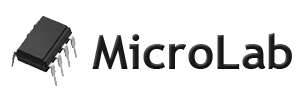Well, internet is full of op amp tutorials. Wasting time for writing yet another tutorial which will say nothing new is not efficient. What I’ll do is to search for good tutorials and list them. I’ll also read/watch them and if I have something to add – I’ll write it. Also if you have troubles understanding something – drop me a line and I’ll try to explain it.
A few misunderstandings
Input current
A common problem I meet in tutorials is that no current flows into and out from the inputs of an opamp. You will find that sometimes reasonable amount of currents can flow into the inputs – sometimes nanoamps. It’s not much but could be a lot depending on resistors you choose and also the gain. Keep in mind that input current cause an error into the input voltage, which is then amplified by the gain of the op amp circuit. so if you have an error 10 mV and gain is 100 then the error in the output is 1V. So input current is not always negligible. Also the current direction of the inputs can be any direction in or out.
Inputs have the same voltage
A lot of tutorials state that op amp does whatever is required to equalize the voltage on positive and negative inputs. Well that’s only true if the schematic is designed correctly. So a better way to say that is: Whenever the positive input is higher than the negative input, the output voltage will rise until the inputs are equal or until maximum output voltage (positive rail – some voltage) is reached. Also whenever the negative input is higher than the positive input the output will lower until the inputs are equal or until the minimum voltage (negative rail + some voltage) is reached. A common examples of both inputs not being equal are:
- when you put feedback and gain resistors on positive input instead on negative. Let’s take LM358 for example. You want to make non inverting amplifier but you revert + and – on inputs. You set the gain to 10, you put 0.1V on (-) and you expect 1V on the output. Well op amp starts with 0V on it’s output, so when you start the circuit there will be 0V on the output and the same on (+) input. So (+) is lower then (-) and the opamp will try to lower the output voltage in order to equalize inputs – and it’ll go all the way to the negative rail – if it’s single supply -0V, if it’s split supply it’ll go to -Vcc. So if output is -Vcc then the (+) input will be -Vcc/gain. This makes it an inverter with crappy Schmitt trigger input. Once you lower the (-) below -Vcc/gain the output will jump right to the +Vcc.
Video Tutorials
- Op amp basics – what is an operational amplifier and how does it work
- Basic op amp circuits – this is different, I swear.
- Op Amp parameters – suggest videos
Articles
- Op amp tutorials
- Op amp parameters tutorials – parameters of op amps, what do they mean and how to measure them and use them in calculations- suggest articles
